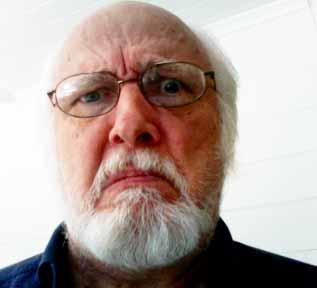 *
*This topic is developing "choragraphy" around the paradigm of Proust's Recherche, foregrounding Swann's experience of Vinteuil's sonata as paragon of the Sensible Idea. The fullest philosophical development to date of heuretic metaphysics (inventing a metaphysics of electracy) is in the work of Gilles Deleuze and Félix Guattari, both in their collaborations and single-authored texts. EmerAgency heuretics picks up the invention trajectory from French post-structuralism in general, and D&G in particular. It will require several posts for an exposition of D&G's relevance for Konsult. It is worth noting, in the context of commentaries regarding Configurethe "closure" of metaphysics, that from the point of view of grammatology, "closure" means "completion": each apparatus has its own version of metaphysics, just as it has its own version of narrative and the other practices that make civilization functional. Heidegger's argument references a certain teleology in the decision made in the first beginning of the Western tradition: the "thing" invented by the Greeks completes its potential in modern industrial mass production. The philosophers themselves rarely acknowledge the grammatological (including technics of language) dimension of metaphysical shift. For example Deleuze, in his major study Difference & Repetition, undertakes a systematic experiment to invent an alternative to the metaphysics of Plato and Aristotle, without acknowledging the grounding of Greek philosophy in the alphabetic machine. As late as What Is Philosophy?, D&G's final collaboration, they are still puzzling over exactly why philosophy began in Greece at that moment in history. This lapse is compensated for in other ways (and rectified on the electrate side in Deleuze's cinema books), leading D&G beyond the consensus critique of conceptual discursive thinking, to the fullest account yet of a possible electrate metaphysics. A shorthand version of their generative CATTt is: Contrast: Metaphysics of Plato and Aristotle; Analogy: Modernist arts (Proust in particular); Theory: Sciences of Complexity, Chaos, Catastrophe; Target: Practical Reason, and even "lifestyle" itself (politics, ethics, aesthetic practices seeking alternatives to Capitalist, commodity fascism); tale: philosophical treatise. The purpose for the moment is to extract from their poetics some features most relevant to Appiphany and Konsult.
Despite a formidable innovative vocabulary that changes with every book, D&G's oeuvre is consistent, spinning out variations on a core theme. A concordance correlating the vocabularies of each book is found in Manuel Delanda's Intensive Science and Virtual Philosophy ("Appendix: Deleuze's Words"). Our heuretic approach extracts from the core, guided by the needs of Konsult rather than scholarship. The point of departure for their heuretics is Aristotle's systematizing of Plato's cosmology in Timaeus, which is to say that D&G are addressing choragraphy. Plato introduced Chora (Space, Region) as a third kind--genos, generation, including a figure as nurse--facilitating the relationship between Being and Becoming. Since Chora is neither intelligible (idea) nor perceptible (matter), Plato addressed it figuratively (with "bastard" reason). His primary metaphor to evoke the function of Chora was that of threshing or winnowing, expropriating from the Eleusinian Mysteries the liknon or winnowing basket, symbol of fertility. The cosmos emerged not from nothing, but from chaos in the Greek account of creation, through a movement, violent motion, a vortex, introducing a rhythm into chaos capable of sorting the inarticulate whole into the material Elements (Earth, Air, Fire, Water). It is worth reviewing the role of Chora in Plato to clarify D&G's method as heuretic, in that their invention by Contrast is not an attack or rejection of Classical metaphysics, but another variation in becoming idea (the program of the coming philosophy, in Benjamin's terms). D&G update Chora while retaining Plato's figures: the ontological categorial functionality of Chora is that of machinic rhythm, specifically of "turbulence" in the contemporary sense elaborated in chaos theory. D&G name this processual emergence chaosmosis, and their originality and contribution to choragraphy is their extensive elaboration of "turbulence" as the conductive fourth inference procedure that electracy adds to literate reasoning.
Aristotle collapsed Plato's dualism in his invention of substance, a composite of form (Being) and matter (Becoming). Aristotle explicated the ontological pairing in terms of actuality (energeia) and potentiality (dunamis), with reality attributed to actuality through production or realization. The question concerns the Being of life, and the relay generalized into metaphysics (covering all being) was organic growth or development over time, from seed to fruit or egg to chick. Aristotle invented the term entelechy to name this production of things that become what they already are. D&G invert entelechy, describing Being as emergent out of Becoming, with no necessary end or telos, but only a creative processual historical evolution of potentiality. "Capacity" and capability are central notions in emergence, since realization depends upon affordances and how they are exploited within specific conditions. D&G do not abandon the organic relay, but rather draw on contemporary science to update it, including especially ethology. Their primary figure evoking the functioning of existential process across all matter is the rhizome, network formation, but understood in evolutionary terms of symbiotic formations such as the orchid and wasp (clover and bee). Life as generation, the libidinal energy of reproduction, operates through devices of attraction and repulsion, and maintains itself, to survive and thrive (or not). This process has no necessary end or purpose, other than life as such. Part of D&G's innovation is to frame the organic figure as a machine, with the machinic replacing structure in their ontology. The machine is emblematic of modernism, of course, but D&G define the figure transverally as a functionality of flow and interruption across all matter. Our immediate concern is with the implications of chaosmosis for electracy, guiding the design of Konsult and Appiphany.
*Image: Le Vanneur (The Winnower), by Millet
See Gilles Deleuze, Difference & Repetition, Trans. Paul Patton, Columbia University Press, 1994 (French publication 1968).

